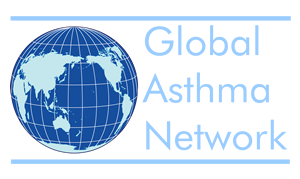

What follows is one example of an approach to schools. Centres must proceed according to their local rules. A final goal should be a high participation rate.
Once local Ethics Committee approval has been obtained, the Principal of each school will be approached for his/her cooperation with the study. It may be helpful to offer to meet the staff to explain the study to them. An informal meeting at the morning break can be a good way to gain acceptance from the teaching staff. The data collection can then commence at a time to suit the school. It is very important that asthma, allergies, rhinitis and eczema are not explicitly mentioned to school staff, pupils and parents in relationship to the study.
It is also very important that any logo used on the questionnaire, or letters to schools, parents does not mention asthma, rhinitis and eczema. For example, the Global Asthma Network logo must not be used on any stationary sent to the school. Wording such as ‘breathing, nose and skin problems’ is acceptable (see demographic questions in section 20 for an example).
Height and weight measurements (strongly recommended) (see section 20.4 for the protocol for measuring height and weight).
13/14 year olds
Ideally these measurements will be taken at school following the video questionnaire. This will enable the questionnaires to be quickly checked at the same time for errors or omissions.
6/7 year olds
The measurements should be taken when the completed questionnaire is returned to school. The logistics of undertaking this should be discussed with the school.
Dear Chairman of Board of Trustees/Principal/Teachers
re: (your country of study) Health Survey
We are inviting some children at your school and their parents/guardians to take part in an important international study. Many schools in (your centre name) have taken part in a previous study similar to this, and by using random sampling techniques, your school has been selected. We wish to involve children aged 13 and 14 years to understand more about the increasing problem of respiratory symptoms and the environment in children of this age group.
This survey is being carried out in other areas of (your country name) and many overseas countries (more than 100 countries are expected to participate). The (your centre name) survey is being funded by (your funding source).
For your school, it would mean:
One of our research team will be in contact with you soon to discuss this survey further. In the meantime if there is any further information you require about the survey, please do not hesitate to contact me (name of field worker) by ringing xxx xxxx.
This survey has the approval of the (name of your local ethics committee), the Chair of which you can contact directly with any enquiries, phone xxx xxxx.
Yours sincerely
NAME(S) and ADDRESS(ES)
Ethical Approval statement from your ethics committee: For example
APPROVED BY (name of your local ethics committee) on DATE for a period of three years from DATE. Reference XXXXX
Dear Chairman of Board of Trustees/Principal/Teachers
re: (your country of study) Health Survey
We are inviting some children at your school and their parents/guardians to take part in an important international study. Many schools in (your centre name) have taken part in a previous study similar to this, and by using random sampling techniques, your school has been selected. We wish to involve parents of children aged 6 to 7 years to understand more about the increasing problem of respiratory symptoms and the environment in children of this age group.
This survey is being carried out in other areas of (your country name) and many overseas countries (more than 100 countries are expected to participate). The (your centre name) survey is being funded by (your funding source).
For your school, it would mean:
One of our research team will be in contact with you soon to discuss this survey further. In the meantime if there is any further information you require about the survey, please do not hesitate to contact me (name of field worker) on xxx xxxx.
This survey has the approval of (name of your local ethics committee), the Chair of which you can contact directly with any enquiries, phone xxx xxx.
Yours sincerely
NAME(S) and ADDRESS(ES)
Ethical Approval statement from your ethics committee: For example
APPROVED BY (name of your local ethics committee) on DATE for a period of three years from DATE. Reference XXXXX
Note: This manual has been updated as of 10 September 2015. If you visited or downloaded the manual before this date, please replace it with this latest version.
Note: If the pdf opens in an internet browser rather than with Adobe Acrobat Reader, in some browsers some of the formatting may not display correctly - for example the boxes in section 20.1 may not show up. If you have difficulty viewing the pdf document in your browser, please right click the link above and choose "save link as" from the list of options. This will allow you to save the pdf to your computer and open it using Adobe Acrobat Reader.
Our network has been targeted by an email scam. If you receive any unusual requests for assistance from any of the steering group members, please ignore it.
These emails are a common scam that has also targeted many other organisations. Please note we will never make any request for financial assistance from our collaborators. If you have any questions please contact us at info@globalasthmanetwork.org